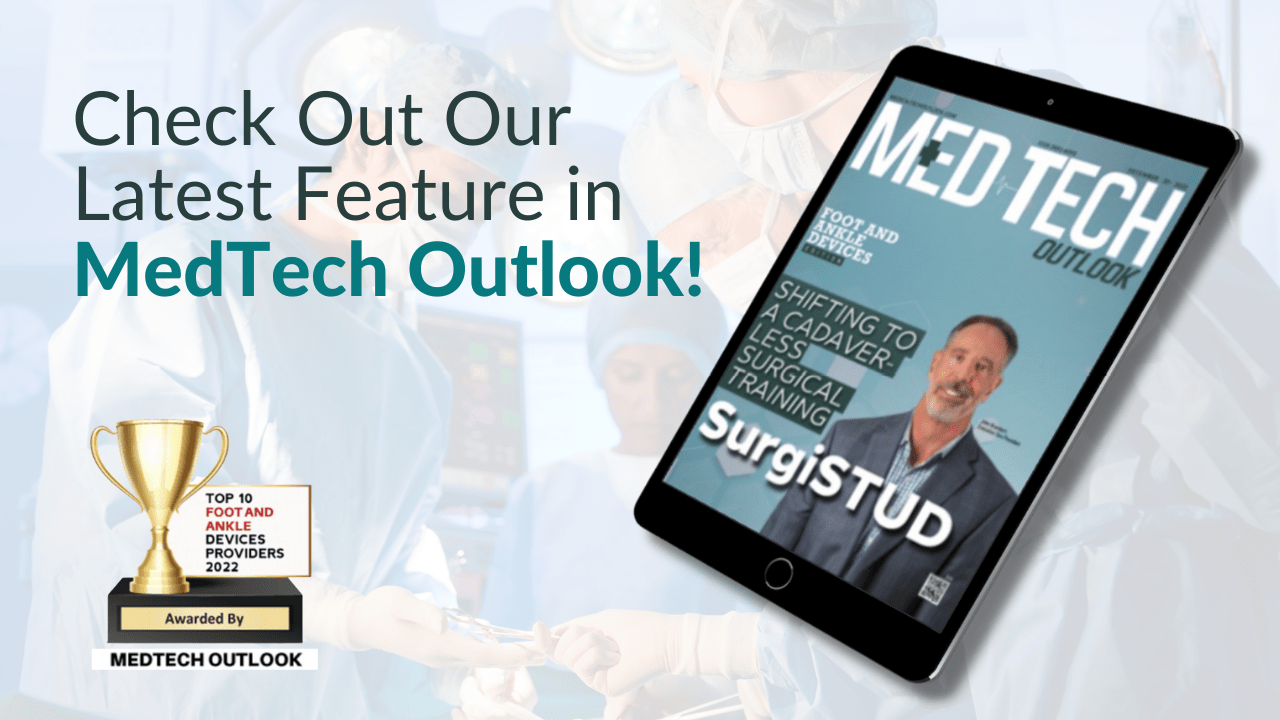
Medical Institutes are Shifting to a Cadaver-Less Surgical Training Model
While simulated medical and surgical training have become more relevant over the years, cadaver dissection remains an integral part of medical training. Enhancing surgical training by cadaveric dissection is a time-proven method, but it’s not without its challenges due to its rising cost and management due to restrictions around the use of cadavers.
Considering the shortage and price of cadavers, many organizations are closing the door on traditional cadaver training and shifting toward three-dimensional anatomical models that provide the necessary visual and tactile experiences to learn and apply surgical knowledge.
Helping organizations excel in this transition is SurgiSTUD.
SurgiSTUD has modernized the approach of training surgeons with its sophisticated Surgical Training and Utility Devices (STUDs), which are biofidelic 3D models suitable for various medical needs. The goal has been to find an optimal way to provide anatomically and biomechanically realistic models that mimic the tactual feel of performing surgery in the OR.
Additionally, SurgiSTUD’s 3D models are carefully designed in collaboration with key opinion leaders and surgeons to enhance surgical training by delivering solutions with high biomechanical fidelity, customizability, and cost savings over existing cadaveric and synthetic options.
SurgiSTUD collaborates with those who have performed thousands of procedures; their feedback helps in designing realistic models that feel like an actual patient on the table. That is key to impart learning that lasts.
SurgiSTUD’s patented 3D printing technology helps in this process, by creating models that mimic real anatomies, pathologies, and deformities to provide a fully choreographed physical experience. It allows trainees and surgeons to replicate the experience they would face with a real patient, with many of the models coming from CT-scans with specific pathology and deformities one wouldn’t find in cadavers. Driven by the costs of using traditional cadavers by 75 percent, and shortened the time to train a surgeon from the standard eight weeks, down to two weeks.
“SurgiSTUD provides a consistent training paradigm, allowing surgeons to train efficiently on a specific subject with a specific defect, something cadaver training simply cannot do,” says John Brambert, executive vice president of SurgiSTUD.
Trainees get more practice with SurgiSTUDs as they can also choose different levels of complexity in the training models, thereby tackling challenging conditions step by step. As all trainees can work on identical models, it also becomes much easier for the mentors to monitor each trainee’s progress at one time with the same scenario.
"SurgiSTUD provides a consistent training paradigm, allowing surgeons to train efficiently on a specific subject with a specific defect, something cadaver training simply cannot do"
SuriSTUD’s FootSTUD is particularly designed to train on foot and ankle procedures. One of their clients wanted to design a synthetic foot and ankle model with specific deformities. SurgiSTUD collected relevant CT scans and printed the model using its 3D printing process, customizing every bone and tissue in the foot based on the client’s specific surgical training needs. This ultimately enhanced the quality and safety of the client’s surgical training, resulting in improved outcomes, decreased costs, and increasing overall training engagements.
SurgiSTUD’s solutions are the future of surgical training. The anatomical accuracy of its innovative 3D models is what these key features, SurgiSTUD has proven expertise in reducing.


